Abstract
OBJECTIVES: To compare transitions from private households to institutions between 1971-81 and 1981-91 among elderly people and see whether (1) differentials in the risk of institutionalisation changed and (2) whether the risk was higher in the second period. DESIGN: Cross sequential analysis of data from the Office of National Statistics longitudinal study, a record linkage study which included individual level data from three national censuses, (1971, 1981, and 1991) and linked vital registration data. SUBJECTS: Altogether 26,400 people aged 65 and over in 1971-81 and 32,500 persons aged 65 and over in 1981-91. These samples represent 1% of the population of England and Wales. RESULTS: In both periods models including age, housing tenure, and marital status or household/family type terms fitted the data reasonably well. The effect of age was stronger in the second decade, while that of marital status was reduced. The risk of transition to an institution was nearly 33-52% higher in the second decade after controlling for these factors. CONCLUSIONS: During the 1980s the availability of state financed institutional care increased substantially; a growth which the 1990 NHS and Community Care Act was designed to reverse. Increased access to institutional care undoubtedly is one factor underlying the higher transition rate to institutions observed in 1981-91 than for the previous decade. During 1981-91, transitions to live with relatives also declined substantially. It is not clear whether this simply represents the continuation of a previous trend or whether the increased availability of institutional care led to some substitution for family care. Either interpretation has worrying implications for policy makers keen to promote care in the community.
Full text
PDF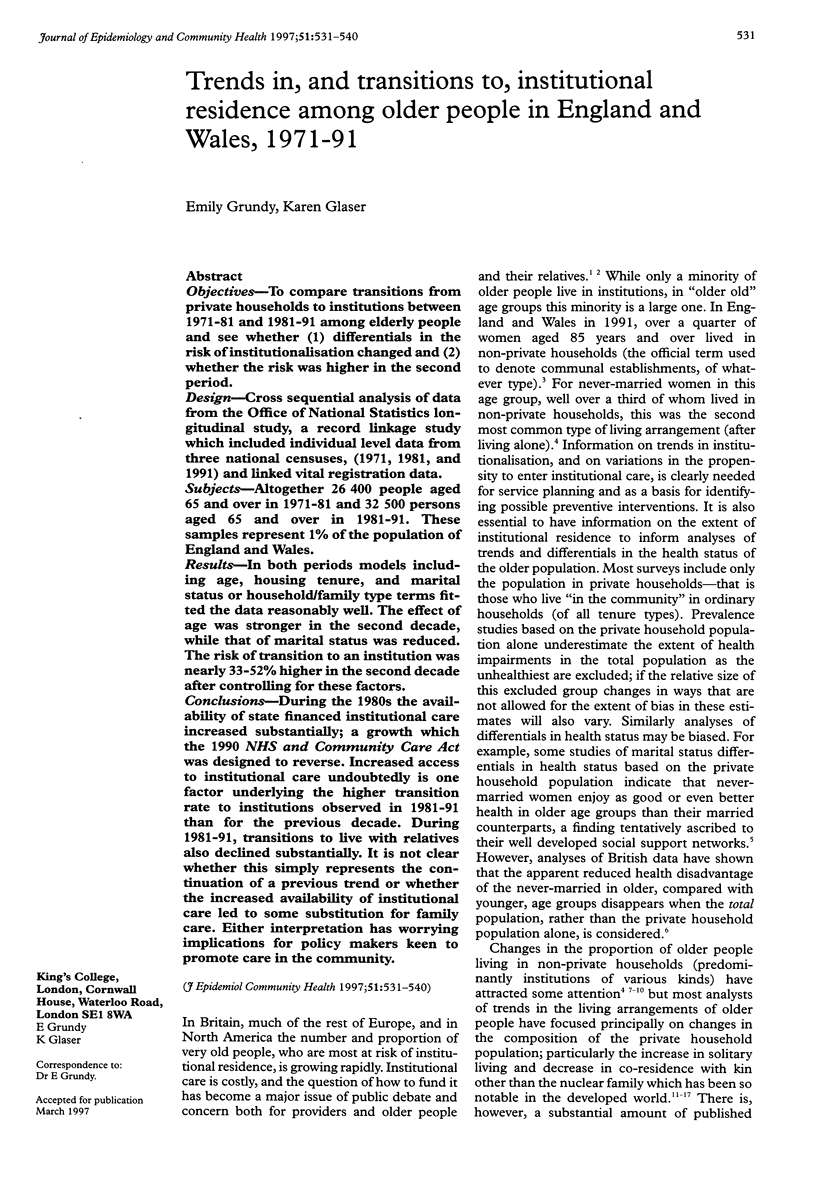
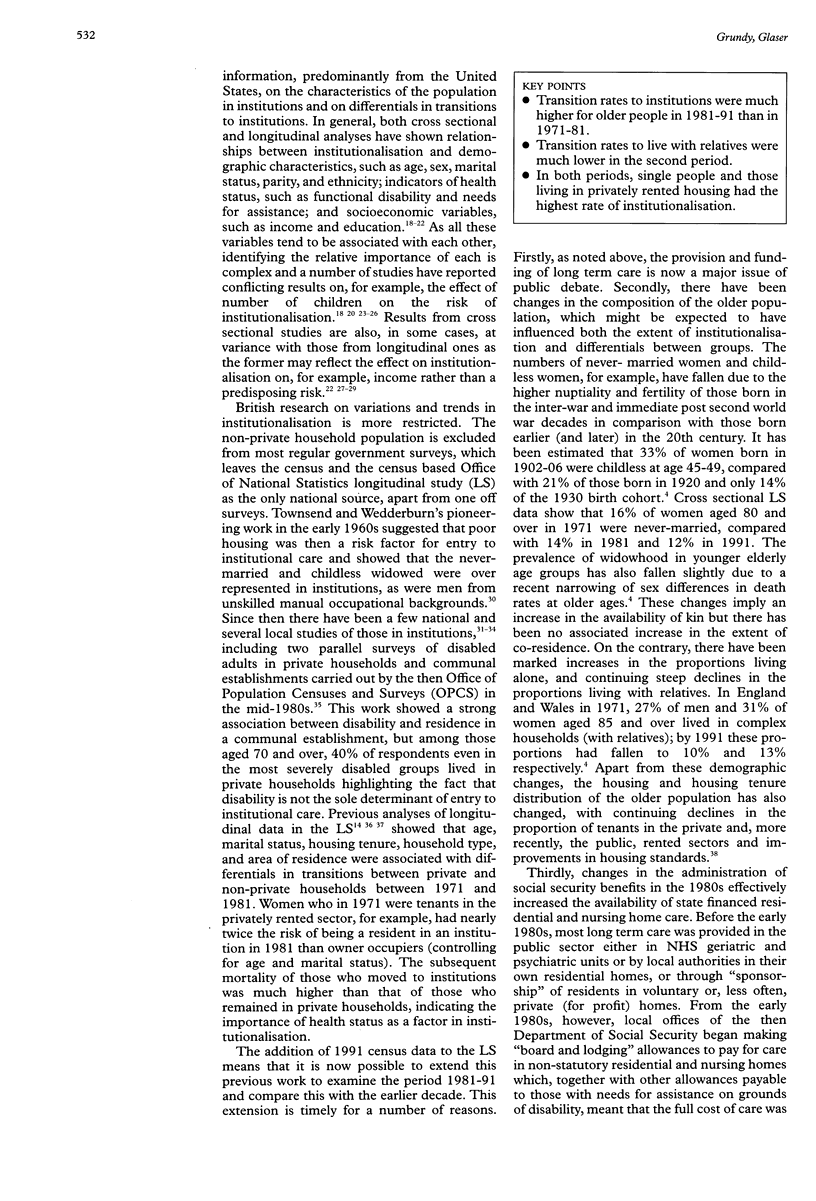
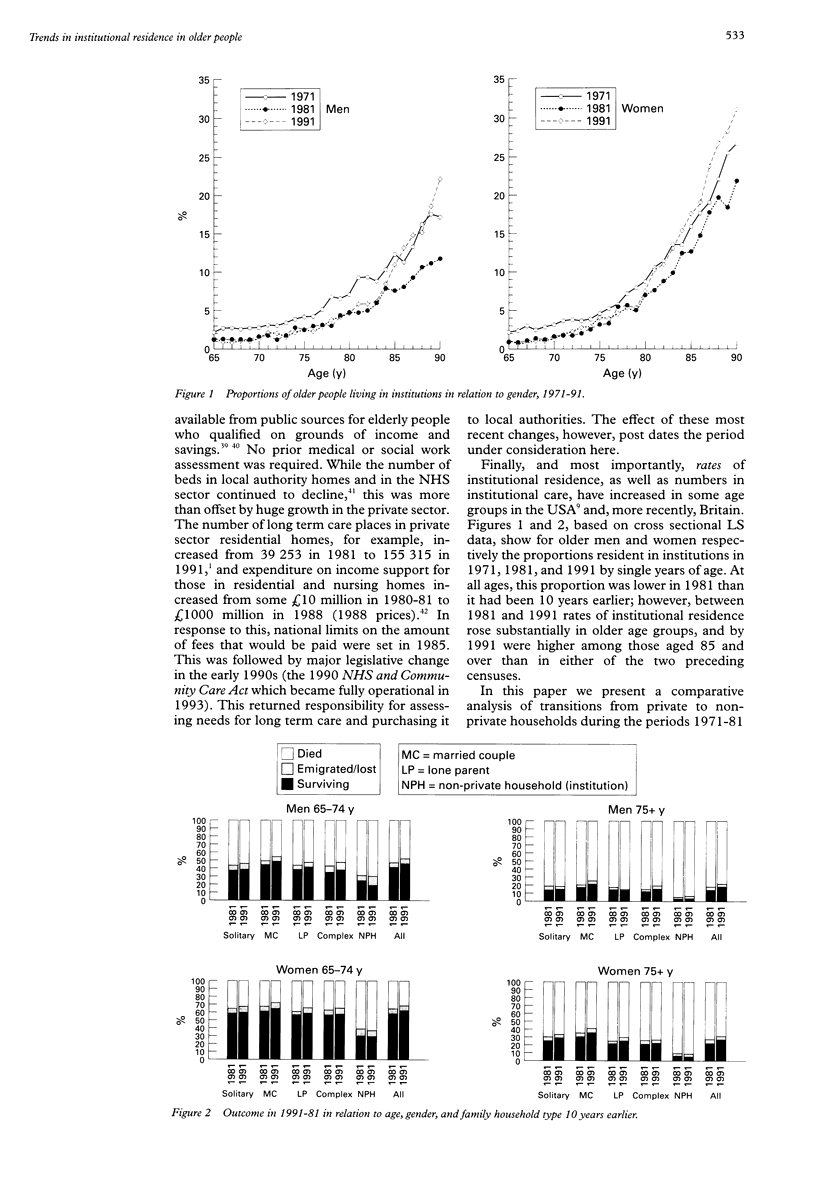
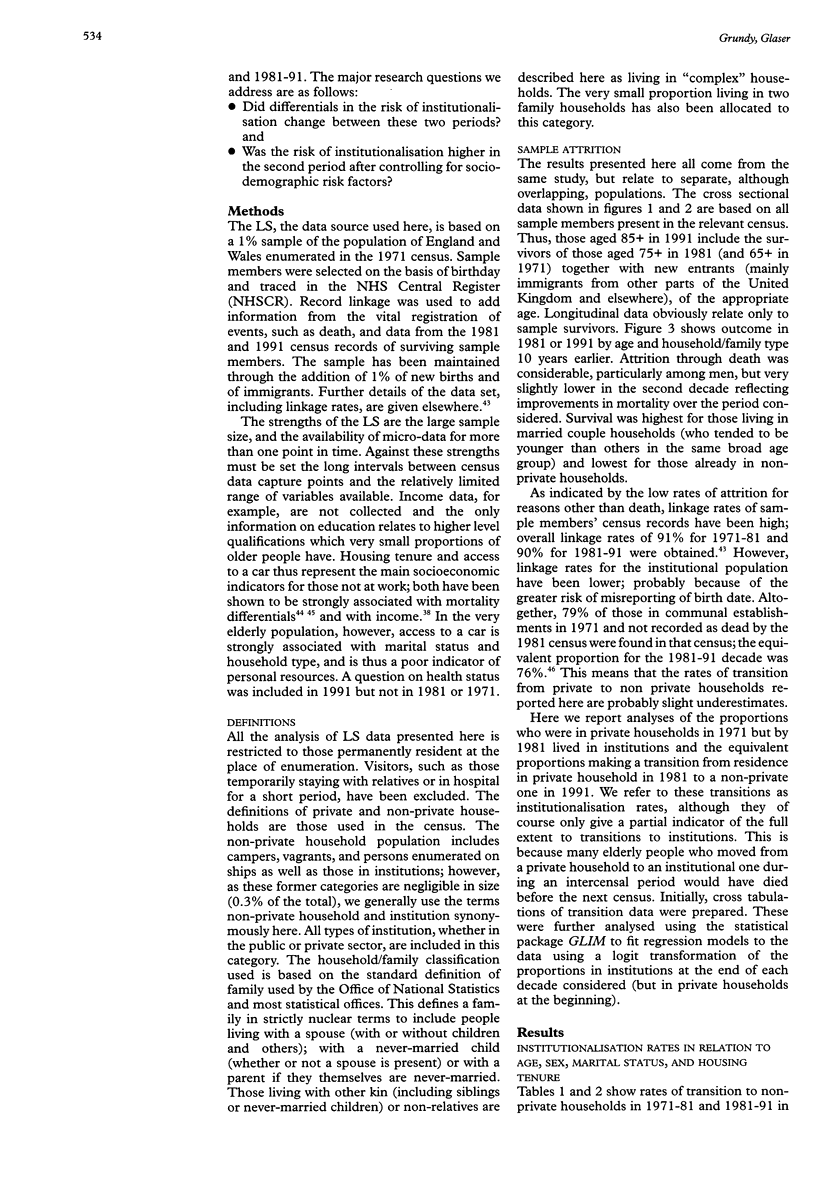
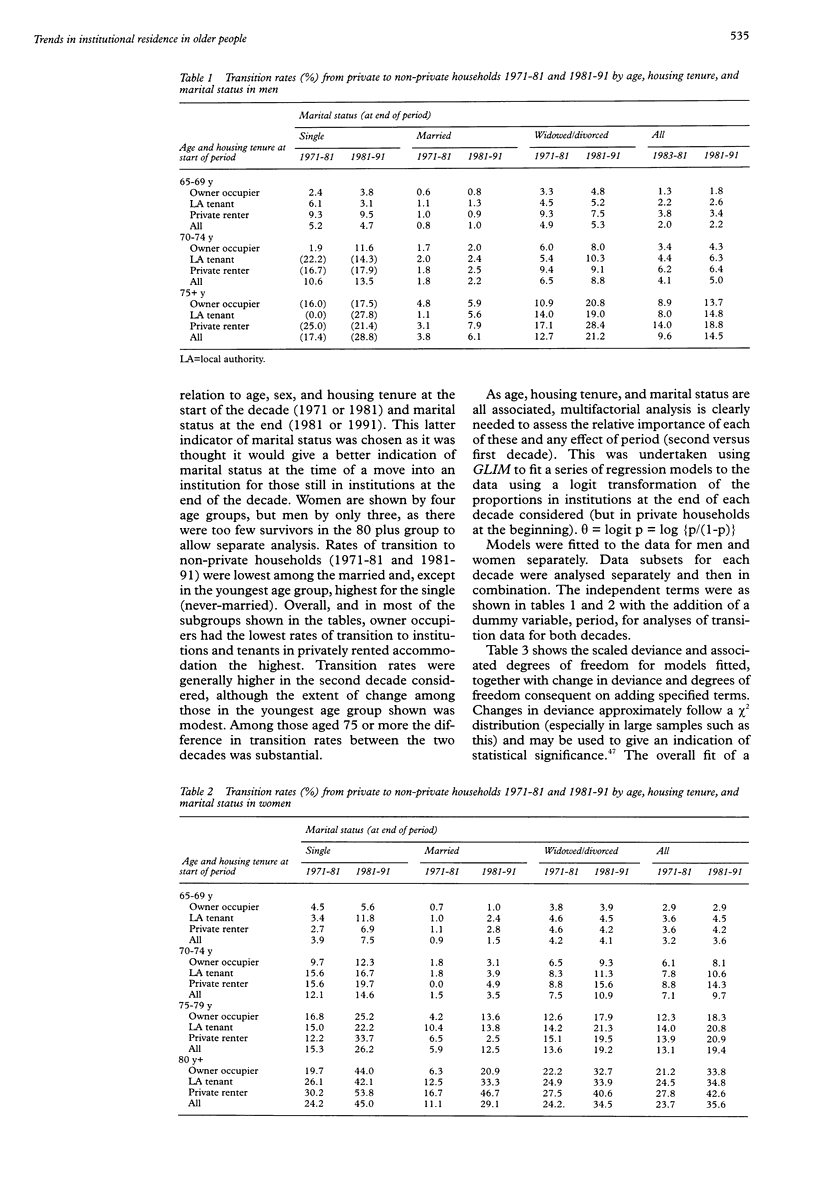
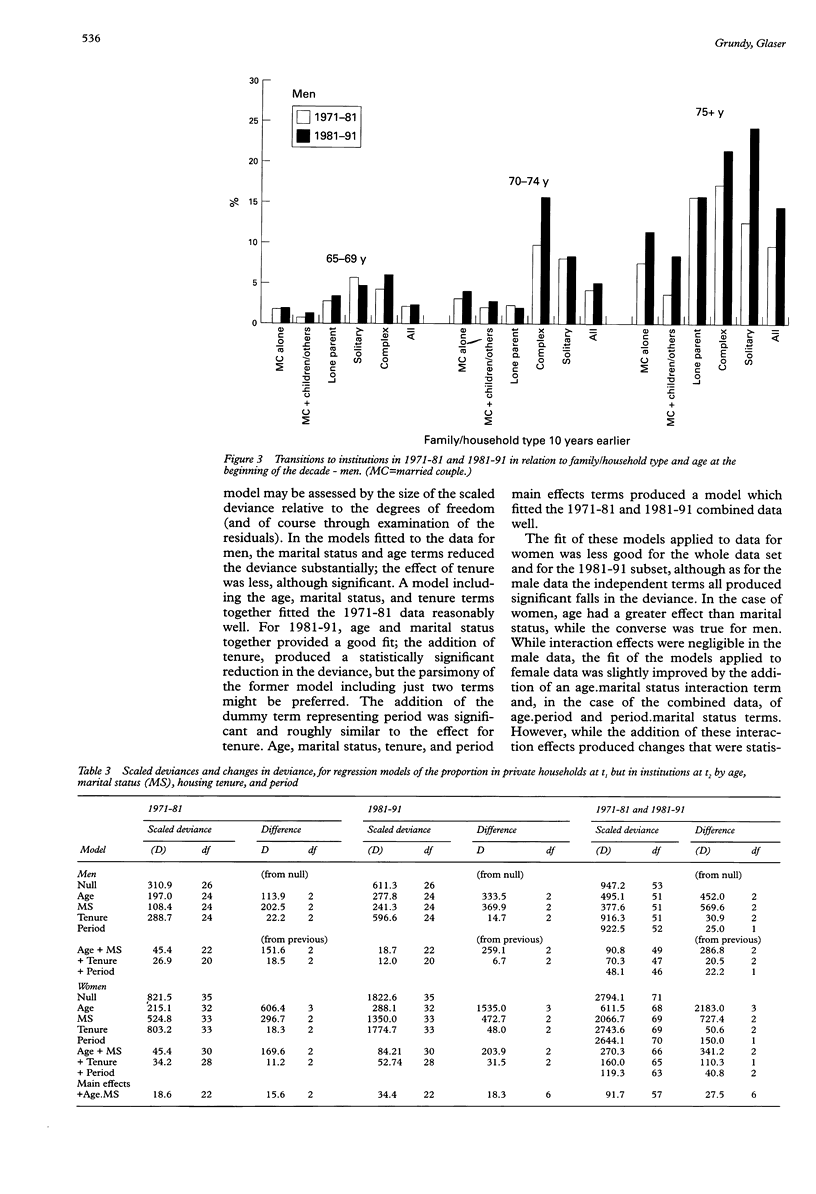
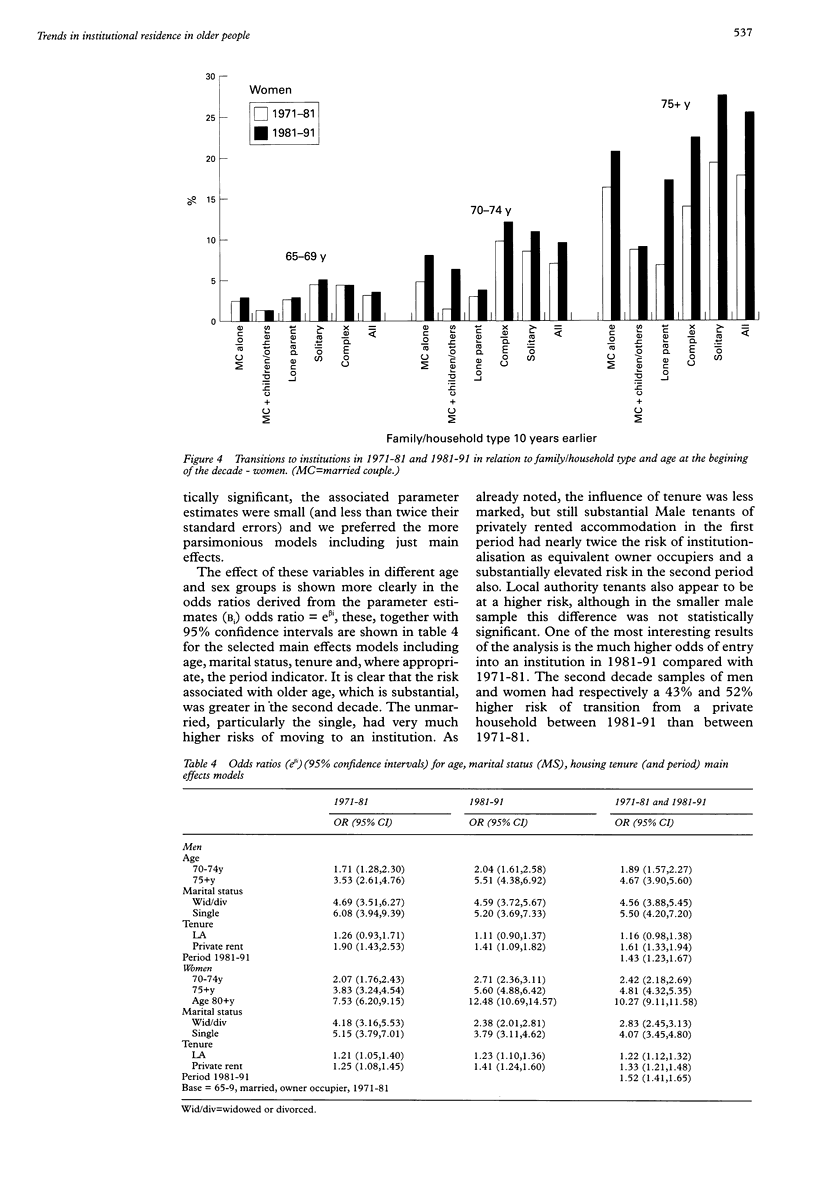
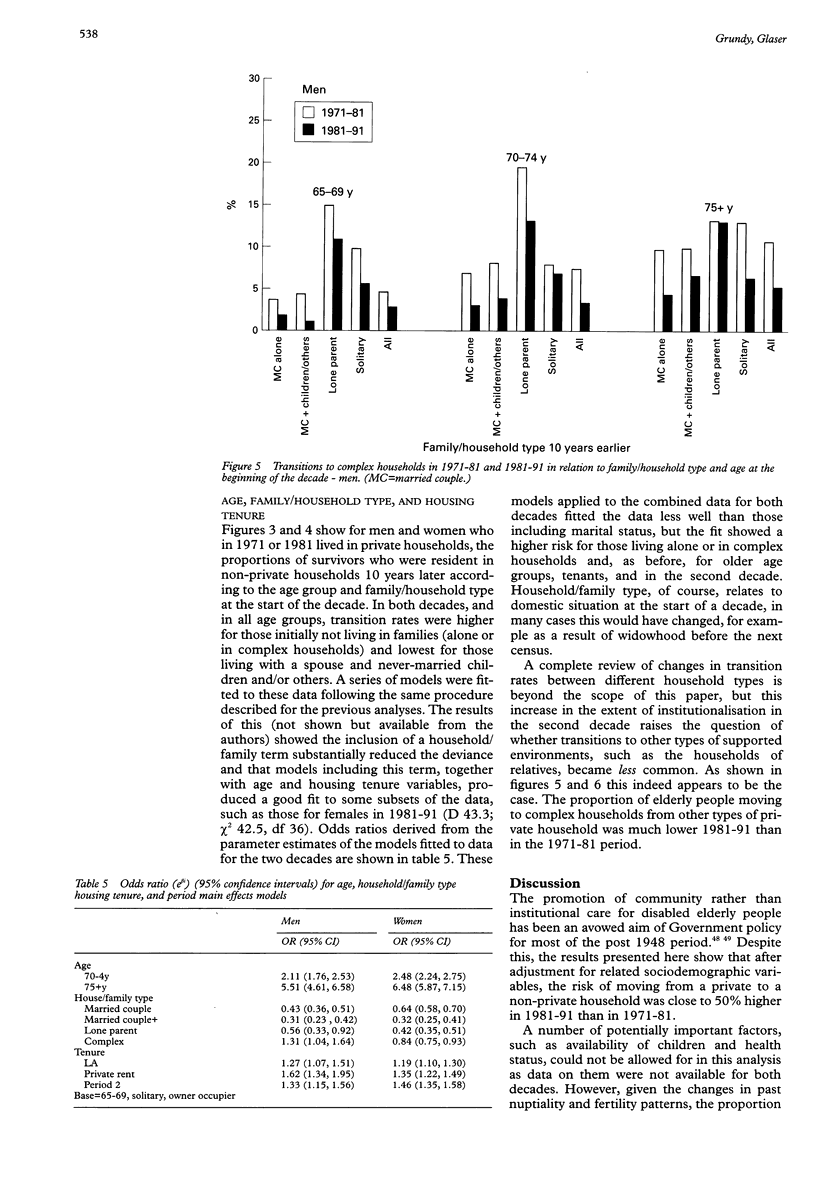
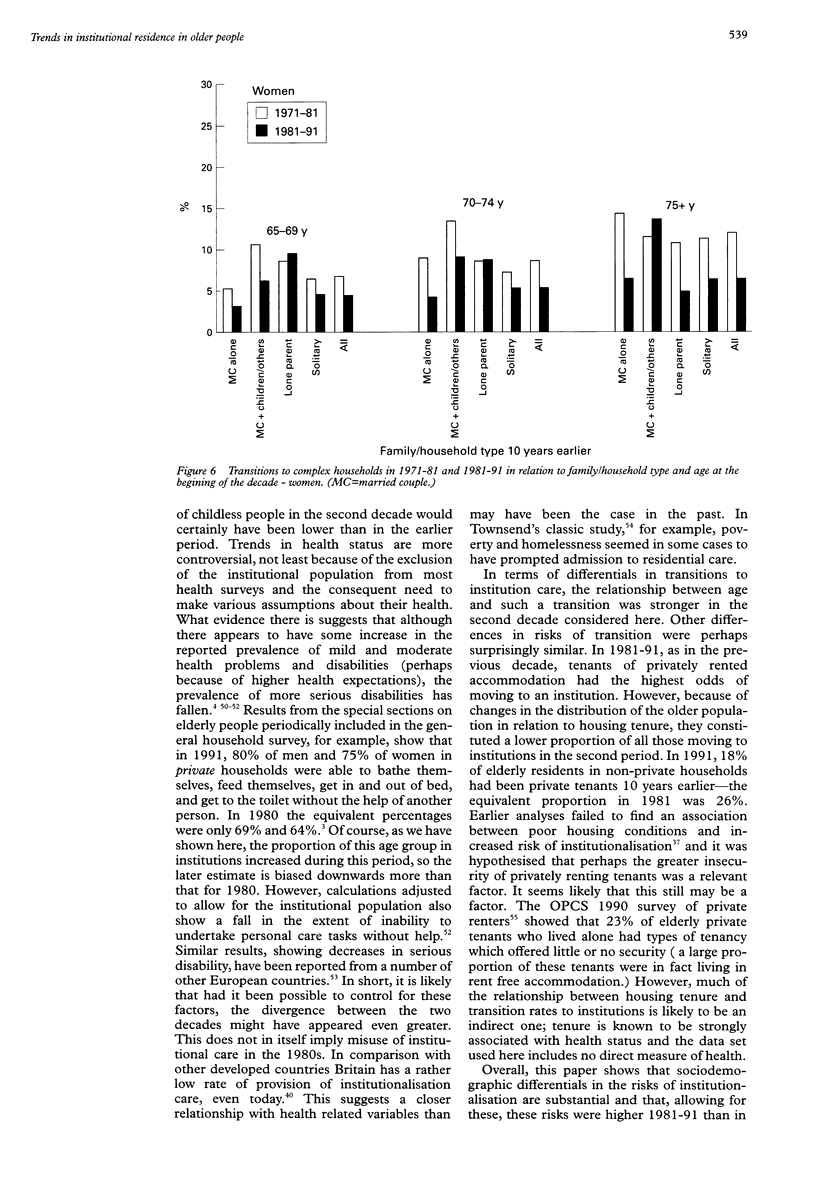
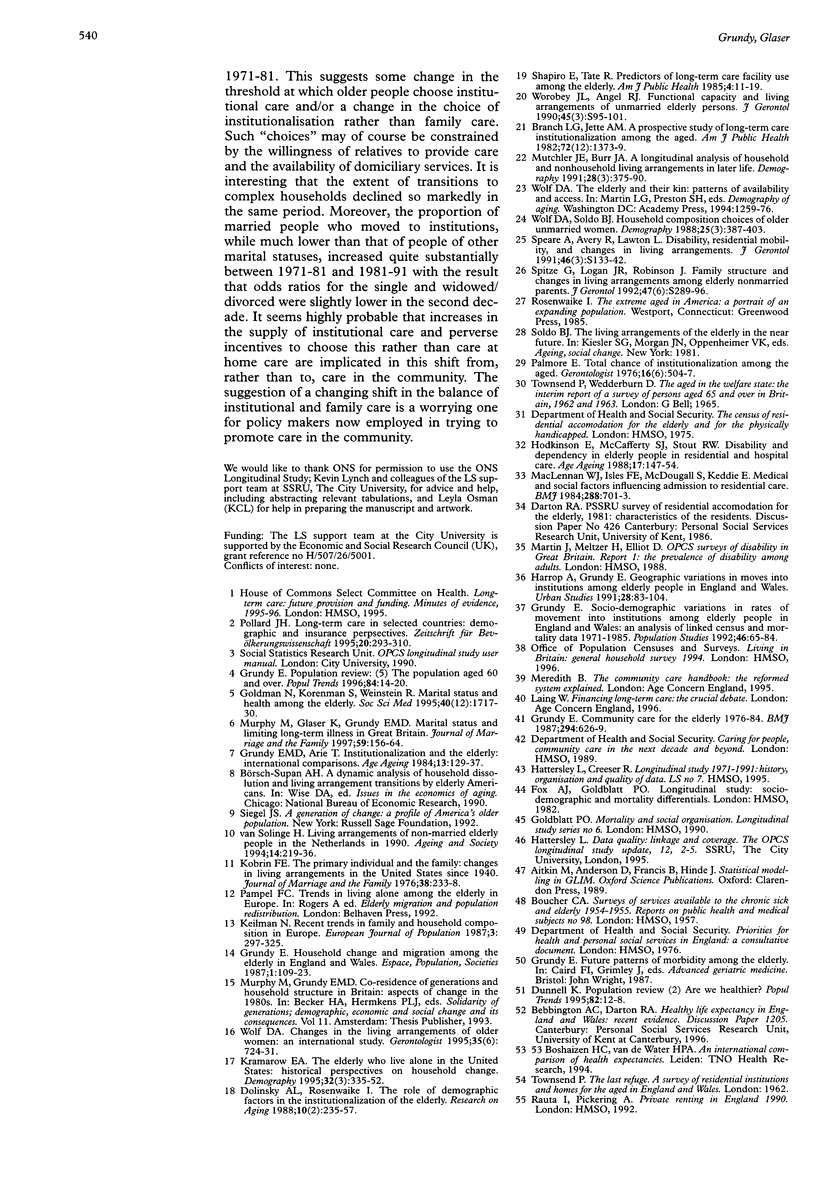
Selected References
These references are in PubMed. This may not be the complete list of references from this article.
- Branch L. G., Jette A. M. A prospective study of long-term care institutionalization among the aged. Am J Public Health. 1982 Dec;72(12):1373–1379. doi: 10.2105/ajph.72.12.1373. [DOI] [PMC free article] [PubMed] [Google Scholar]
- Dolinsky A. L., Rosenwaike I. The role of demographic factors in the institutionalization of the elderly. Res Aging. 1988 Jun;10(2):235–257. doi: 10.1177/0164027588102006. [DOI] [PubMed] [Google Scholar]
- Dunnell K. Population review: (2) are we healthier? Popul Trends. 1995 Winter;(82):12–18. [PubMed] [Google Scholar]
- Goldman N., Korenman S., Weinstein R. Marital status and health among the elderly. Soc Sci Med. 1995 Jun;40(12):1717–1730. doi: 10.1016/0277-9536(94)00281-w. [DOI] [PubMed] [Google Scholar]
- Grundy E. M. Population review: (5). The population aged 60 and over. Popul Trends. 1996 Summer;(84):14–20. [PubMed] [Google Scholar]
- Grundy E., Arie T. Institutionalization and the elderly: international comparisons. Age Ageing. 1984 May;13(3):129–137. doi: 10.1093/ageing/13.3.129. [DOI] [PubMed] [Google Scholar]
- Grundy E. Community care for the elderly 1976-84. Br Med J (Clin Res Ed) 1987 Mar 7;294(6572):626–629. doi: 10.1136/bmj.294.6572.626. [DOI] [PMC free article] [PubMed] [Google Scholar]
- Hodkinson E., McCafferty F. G., Scott J. N., Stout R. W. Disability and dependency in elderly people in residential and hospital care. Age Ageing. 1988 May;17(3):147–154. doi: 10.1093/ageing/17.3.147. [DOI] [PubMed] [Google Scholar]
- Keilman N. Recent trends in family and household composition in Europe. Eur J Popul. 1988 Jul;3(3-4):297–325. doi: 10.1007/BF01796903. [DOI] [PubMed] [Google Scholar]
- Kramarow E. A. The elderly who live alone in the United States: historical perspectives on household change. Demography. 1995 Aug;32(3):335–352. [PubMed] [Google Scholar]
- MacLennan W. J., Isles F. E., McDougall S., Keddie E. Medical and social factors influencing admission to residential care. Br Med J (Clin Res Ed) 1984 Mar 3;288(6418):701–703. doi: 10.1136/bmj.288.6418.701. [DOI] [PMC free article] [PubMed] [Google Scholar]
- Mutchler J. E., Burr J. A. A longitudinal analysis of household and nonhousehold living arrangements in later life. Demography. 1991 Aug;28(3):375–390. [PubMed] [Google Scholar]
- Palmore E. Total chance of institutionalization among the aged. Gerontologist. 1976 Dec;16(6):504–507. doi: 10.1093/geront/16.6.504. [DOI] [PubMed] [Google Scholar]
- Speare A., Jr, Avery R., Lawton L. Disability, residential mobility, and changes in living arrangements. J Gerontol. 1991 May;46(3):S133–S142. doi: 10.1093/geronj/46.3.s133. [DOI] [PubMed] [Google Scholar]
- Spitze G., Logan J. R., Robinson J. Family structure and changes in living arrangements among elderly nonmarried parents. J Gerontol. 1992 Nov;47(6):S289–S296. doi: 10.1093/geronj/47.6.s289. [DOI] [PubMed] [Google Scholar]
- Wolf D. A. Changes in the living arrangements of older women: an international study. Gerontologist. 1995 Dec;35(6):724–731. doi: 10.1093/geront/35.6.724. [DOI] [PubMed] [Google Scholar]
- Wolf D. A., Soldo B. J. Household composition choices of older unmarried women. Demography. 1988 Aug;25(3):387–403. [PubMed] [Google Scholar]
- Worobey J. L., Angel R. J. Functional capacity and living arrangements of unmarried elderly persons. J Gerontol. 1990 May;45(3):S95–101. doi: 10.1093/geronj/45.3.s95. [DOI] [PubMed] [Google Scholar]


